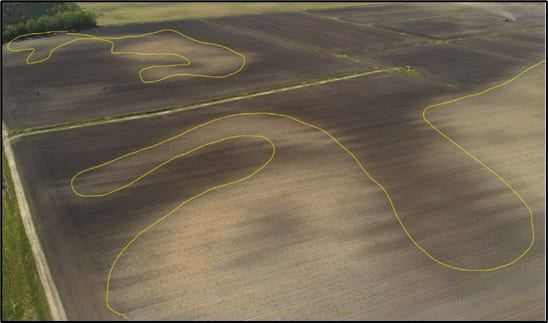Jarrod O. Miller, Extension Agronomist, jarrod@udel.edu

Figure 1. Interveinal Chlorosis in Sussex County Fields
As our corn fields have advanced from the V3 to V4 stage, strong visual patterns of chlorosis (yellowing) and interveinal stripes have appeared (Figure 1). This can be associated with sulfur availability and cooler May weather.
Much of our S will be available in finer textured (higher clay) layers and in soil with higher organic matter. Organic matter breakdown is driven by soil biology, and our cooler May weather may be limiting S release. This may be worse in soils with lower organic matter, which can be incredibly variable across our coastal soils (Figure 2)
Additions of S at side-dress (ammonium sulfate, N-Sul) or using gypsum may alleviate the issue, as well as warmer weather. Past early season S deficiencies have not necessarily led to yield reductions (https://sites.udel.edu/weeklycropupdate/?p=9161)

Figure 2. Soil Patterns with Variable Organic Matter Content
